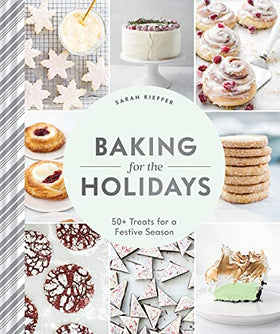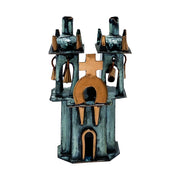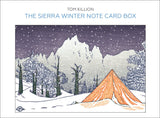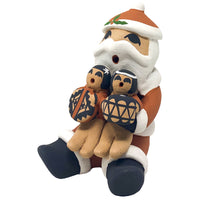
To Live and Dine in L.A.
- Low stock - 2 items left
- Inventory on the way
Menus And The Making of the Modern City from the Collection of the Los Angeles Public Library
By Josh Kun
How did Los Angeles become the modern city the world watches? We know some of the answers all too well. Sunshine. Railroads. Hollywood. Freeways. But there's another often overlooked but especially delicious and revealing factor: food.
Think veggie tacos and designer pizzas, hot dogs on sticks and burgers from golden arches, Cobb Salads and chocolate-topped ice cream sundaes, not to mention the healthiest dishes on the planet. Ask anyone who has eaten in L.A.--the city shapes the tastes that predict how America eats. And it always has.
In its fourth book collaboration with the Los Angeles Public Library and the Library Foundation of Los Angeles, Angel City Press releases To Live and Dine in L.A.: Menus and the Making of the Modern City by Josh Kun.With more than 200 menus--some dating back to the nineteenth century--culled from thousands in the Menu Collection of the Los Angeles Public Library, To Live and Dine in L.A. is a visual feast of a book. But it's more. Much more.
In his detailed history, author Josh Kun riffs on what the food of a foodie city says about place and time; how some people eat big while others go hungry, and what that says about the past and now. Kun turns to chefs and cultural observers for their take on modern: Chef Roy Choi sits down long enough to say why he writes "some weird-ass menus." Pulitzer Prize-winning critic Jonathan Gold looks at food as theater, and museum curator Staci Steinberger considers the design of classic menus like Lawry's. Restaurateur Bricia Lopez follows a Oaxacan menu into the heart of Koreatown.
The city's leading chefs remix vintage menus with a 21st-century spin: Joachim Splichal, Nancy Silverton, Susan Feniger, Ricardo Diaz, Jazz Singsanong, Cynthia Hawkins, Micah Wexler, Ramiro Arvizu and Jaime Martin del Campo cook up the past with new flavors. And, of course, the menus delight: Tick Tock Tea Room, Brown Derby, Trumps, Slapsy Maxie's, Don the Beachcomber, and scores more.
Kun tackles the timely and critically important topic of food justice, and shows how vintage menus teach us about more than just what's tasty, and serve as guides to the politics, economics, and sociology of eating. America is a dining-out nation, and our research indicates that L.A. has long been one of its top dining-out towns. The Library's collection is a living repository of meals past, an archive of urban eating that tells us about the changing historical role of food in the city, which is to say it tells us about just about everything that food touches: economics, culture, taste, race, politics, architecture, class, design, industry, gender, to name just some of the themes that recur on menu pages.
Kun challenged contributors to tackle subjects that readers may have never contemplated.
As the renowned L.A. chef Roy Choi points out in his Foreword to To Live and Dine in L.A.: The more I looked at the menus, the more they told me about the city and how neighborhoods developed. But it was the menus that I couldn't find that forced me to ask questions about how life really was. I started to think about how the city is now and if those missing menus were a reflection of life just as it is now. Were these menus of the affluent and middle-class? Were the working classes even eating with menus, or were they mostly eating at stands and carts? Were there disparities and access problems just like today?To Live and Dine in L.A. is the first book of its kind--the definitive way to read a menu for more than just what to order. It's about how to live. And how to dine. In L.A.
Use collapsible tabs for more detailed information that will help customers make a purchasing decision.
Ex: Shipping and return policies, size guides, and other common questions.







